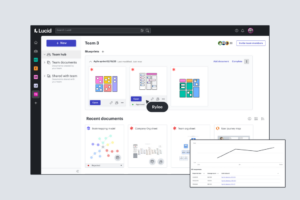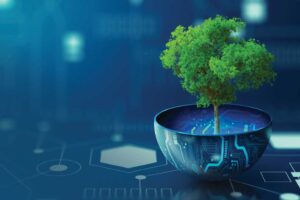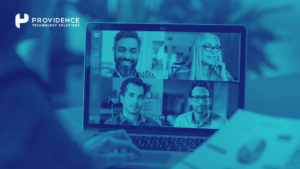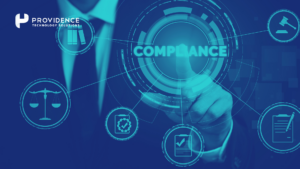Your workers value purpose, embrace learning, and appreciate efficiency. They want to make meaningful contributions to your organization while advancing their careers and skill sets, leveraging technology along the way.
Providing a rewarding employee experience improves recruitment and retention of top talent, increases organizational productivity, and enhances the quality of your products and services.
“A productive, positive employee experience has emerged as the new contract between employer and employee,” according to a Deloitte article on improving the employee experience.
“Just as marketing and product teams have moved beyond customer satisfaction to look at total customer experience, so is HR refocusing its efforts on building programs, strategies, and teams that understand and continuously improve the entire employee experience.”
Employees want “a holistic, end-to-end—recruitment-to-retirement—experience from their employers,” HR experts wrote for Deloitte. “HR and business leaders face both the demand and the opportunity to rethink the roles, structure, tools, and strategy they use to design and deliver an integrated employee experience.”
Consider these top trends in employee experience for 2020.
1) Mapping The Employee Experience
“Companies will make a greater effort to align their employee experience with their customer experience because both audiences are integral to a company’s success,” according to a Human Resources Today article about top employee experience trends for 2020.
“Delivering experiences (especially from a technology and workplace design perspective) that support employees in the same way that companies do with consumers is something every company should strive to do.”
Employees expect their experience as a worker to be similar to that of a consumer. They want to get what they need quickly and easily, whether they are at home or the office. Moreover, it is demonstrated that engaged and satisfied employees deliver the best possible customer experience. As a result, companies continue to hone in on employee experience and refine their approach to support the most engaging environment possible.
Companies improve the employee experience by approaching it as deliberately as they do the customer experience, such as through the following methods.
- Increasing employees’ desire to work for the company by focusing on the “value” that they receive.
- Meeting the evolving needs of employees by creating “stages” of the employee journey as well as cross-training or cross-developmental opportunities.
- Providing meaningful work by aligning the company’s organizational mission with employees’ personal purposes.
- Making it easier for employees to work for the company by supporting them with people, processes, and technology (including telecommuting options).
- Improving the employee experience by soliciting feedback and acting on the feedback.
“Workplace experience is the application of user experience to the workplace, re-imagining the physical, digital, and cultural aspects of work,” HR consultant Jeanne Meister wrote in a Forbes article about HR trends that matter most in the 2020 workplace. “Work needs to be as frictionless, digital, and personalized as the rest of our lives.”
2) Automating Tasks With Artificial Intelligence
Employees spend more than half of a typical 8-hour workday dealing with administrative tasks and searching for needed information, according to a Quartz/Citrix white paper on priming a new era of digital wellness. But artificial intelligence is making short work of routine work by automating repetitive tasks and providing easy access to information.
“Your talent needs to feel like they’re able to get their work done. Provide them with the workspace and the work functions that enable them to feel good about what they do, and they will,” HR consultant Meghan M. Biro wrote in a TalentCulture article about building a future-proof employee experience.
AI-powered applications increase engagement and productivity by letting employees focus on meaningful work instead of mundane tasks.
“A positive employee experience drives creativity, productivity and the bottom line,” Kristen Ruttgaizer, director of human resources at Igloo Software, told TalentCulture for an article about ways leaders can use tech to create a better employee experience. “By keeping employees well-informed and engaged, businesses will organically reap the benefits of an improved employee experience.”
3) Improving Hiring And Onboarding With Technology
A true, recruitment-to-retirement employee experience starts with candidates. Acquiring and retaining talent becomes easier when companies woo prospective employees from the start.
“Candidate experience is made up of every single interaction with a potential employer — from the pre-application stage through the various rounds of interviews to the offer and onboarding,” HR advisor Kevin W. Grossman wrote in a TalentCulture article about making candidate and employee experiences a top priority.
“All the tech tools and systems our companies leverage across these stages affect how candidates perceive their experiences (good and bad) and the likelihood that they’ll want to work for our companies. Technology is an integral part of all of these candidate interactions.”
Eight of every 10 candidates share positive experiences with friends, relatives, and peers, and six of 10 pass along negative feedback, Grossman noted, citing research from Talent Board. Employees appreciate technology that simplifies interactions with companies.
Hilton has increased its net promoter score for the candidate experience to 80% since implementing chatbots in 2015, HR consultant Meister told TalentCulture for an article about how AI is making the employee experience better than ever. Also, recruiters offer 85 more jobs a week than they did before streamlining the process, she added.
Technology is improving onboarding as well. Employees form a favorable first impression when companies meet their expectations at the start.
“You can create an onboarding experience where people are able to learn quickly and tools are also able to facilitate the right types of conversation and create connections within the organization,” Jonathan Burg, group senior vice president of marketing at Reward Gateway, said, TalentCulture reported in its article about using technology to create a better employee experience.
Employees and candidates appreciate receiving a human touch and feeling that a company sincerely cares about them as individuals, not just as numbers. Streamlining processes with technology frees recruiters and managers to devote more time and attention to candidates and new hires.
4) Increasing Productivity With Communication Tools
Cultivating relationships among employees can be challenging for companies in the age of contingent workers and remote workplaces. So organizations invest in communication tools to foster collaboration.
The average company has seven different communication systems, and 70% of executives expect to buy more, HR consultant Josh Bersin wrote in an article about acquisitions focused on productivity and employee experience. Deals like Slack’s acquisition of Mission show how tech vendors are prioritizing productivity tools that benefit employees, he noted.
Companies can use Mission to create workflows and “employee journeys” within Slack. This is an example of the increasingly popular “embedded HR workflow,” Bersin noted.
“An army of little startups is building tools to read and interpret your messages and send hints, suggestions, and training tips to make your work life easier,” Bersin wrote. “Slack is now what we call an ‘employee experience platform,’ which is a huge new fast-growing market in business.”
5) Engaging With Employees Through Feedback Apps
Companies evaluate the employee experience through feedback applications like surveys. Twenty-two percent of companies survey employees at least quarterly while 79 percent do it annually or less, Deloitte noted in its employee experience article.
“The neglect of regular employee feedback helps explain other challenges companies face today, including shortcomings in driving culture and purpose and providing a healthy work-life balance,” according to Deloitte.
Listening to employees helps companies serve customers and shareholders better. “As one forward-thinking retail executive noted, ‘We used to prioritize our stakeholders as shareholders first, customers second, and employees third. We now realize we had it backward. If we put employees first, they in turn take care of our customers, and they in turn take care of our shareholders,’” HR experts wrote for Deloitte.
6) Supporting Talent Development Through Software
Companies also are investing in talent development applications that help employees learn, grow, and advance their careers. These are important parts of the employee experience, in addition to and in support of organizational programs and processes that position employees for cross-training and other growth opportunities.
AI-powered applications can match employees to open positions within a company as well as suggest training and courses that would prepare them for opportunities, Meister told TalentCulture for its article about how AI is improving the employee experience. This brings “a more personalized form of talent development to the employee experience,” she said.
Also, “a new breed of continuous performance management products that include feedback tools has emerged from vendors such as Reflektiv, BetterWorks, Zugata, Highground, Workboard, and SuccessFactors,” according to Deloitte.
7) Helping Employees Through Service Delivery Platforms
Employee enthusiasm decreases an average of 22% within six months as workers struggle to get basic information or equipment, Human Resource Executive reported in an article about the key elements of employee experience, citing research from ServiceNow.
“Research is signaling to HR that forgetting to solve everyday moments and flow of work [issues] matters,” said Sunita Khatri, senior manager in the product marketing team at ServiceNow, according to Human Resource Executive. “That can lead to friction, causing a negative view of someone’s ability to be connected to their job or purpose.”
Companies make it easier for workers to help themselves through employee service delivery platforms like those from ServiceNow, PeopleDoc, Zendesk, and Salesforce.
Such tools offer an “integrated employee experience for transactional and service needs,” by combining features like chatbots and natural language processing with case management, content management, and easy-to-use mobile and web portals, Deloitte noted.
“These applications become critical when organizations are transforming from a compliance and administrative function to a more strategic HR function, relying on data provided in real time by employees and managers,” according to the Sierra-Cedar 2019–2020 HR Systems Survey White Paper.
Service delivery applications commonly include HR help desk, portals, employee self-service, and manager self-service elements, Sierra-Cedar noted. “It is in this application area that we are seeing the first extensive use-cases for Machine Learning, Natural Language Processing, and Sentiment Analysis, which will lead to brand new enterprise application categories in the areas of communication, engagement, and personalization,” researchers wrote.
Sierra-Cedar recommends following emerging trends in service-delivery applications such as:
- Data-gathering applications
- Engagement and personal well-being platforms’
- Work/productivity burnout monitors
- Return to work resources and tools
- Integrated healthcare and disability management
Companies will continue to focus on improving the employee experience as they transition to a more strategic HR function. Employees have come to expect a consumer-like experience and often will not settle for less.
Improve recruitment, retention, and productivity at your organization by learning how to implement these employee experience trends. Contact Providence Technology Solutions to discuss how we can help.
Providence Technology Solutions helps organizations improve the efficiency and effectiveness of their HR functions by aligning technology and processes with their business needs. Learn how we could help your organization improve your employee experience through our HCM Consulting services.
Contact us today to discuss your needs online, by email at info@theptsteam.com or by calling 904.719.8264.










